From Egypt to China — The Longest Empires to Ever Rule Earth and the Secrets Behind Their Centuries of Power
THE LONGEST EMPIRES TO EVER RULE EARTH

Empires are humanity’s grandest experiments — great machines of power, belief, and endurance that shape the world long after they’re gone. Most rise like a flame and vanish within centuries, but a rare few played the long game — adapting, learning, and surviving through war, famine, and change. These empires didn’t just conquer land; they conquered time itself. Their ruins still speak in whispers, reminding us that power fades, but legacy endures.
PHARAONIC EGYPT RULED FOR 2,768 YEARS (3100 BCE – 332 BCE)

Along the slow, eternal flow of the Nile, one of humanity’s first great civilizations flourished. For nearly three thousand years, Egypt lived beneath the gaze of gods and kings. The pyramids rose like prayers carved in stone, the hieroglyphs carried stories of eternity, and the pharaohs ruled as divine intermediaries between heaven and earth. Despite invasions, droughts, and shifting dynasties, Egypt endured — not through conquest alone, but through culture, faith, and its unbroken rhythm of life along the river. Few civilizations have matched its permanence, or its understanding that time itself was the true empire.
CHINESE IMPERIAL ERA RULED FOR 2,133 YEARS (221 BCE – 1912 CE)
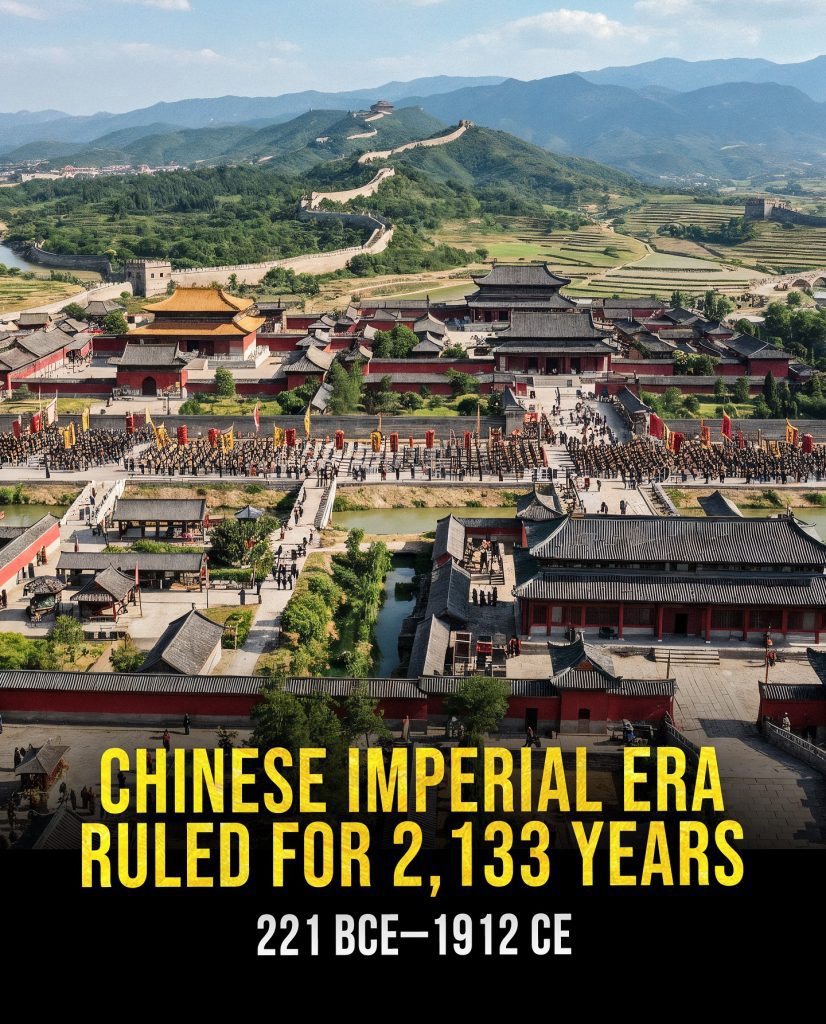
In the East, the dynasties of China rose and fell, yet the empire itself never truly ended. From the first unification under Qin Shi Huang to the last emperor of the Qing, China’s imperial rule spanned over two millennia. Each dynasty added to a tapestry of philosophy, poetry, invention, and discipline. They built walls that stretched across mountains, bureaucracy that governed millions, and a sense of identity so deep it outlived every conqueror. The secret of China’s endurance was not force, but balance — the eternal Mandate of Heaven that demanded rulers stay just, or be replaced by fate itself.
CHAMPA RULED FOR 1,640 YEARS (192 – 1832 CE)
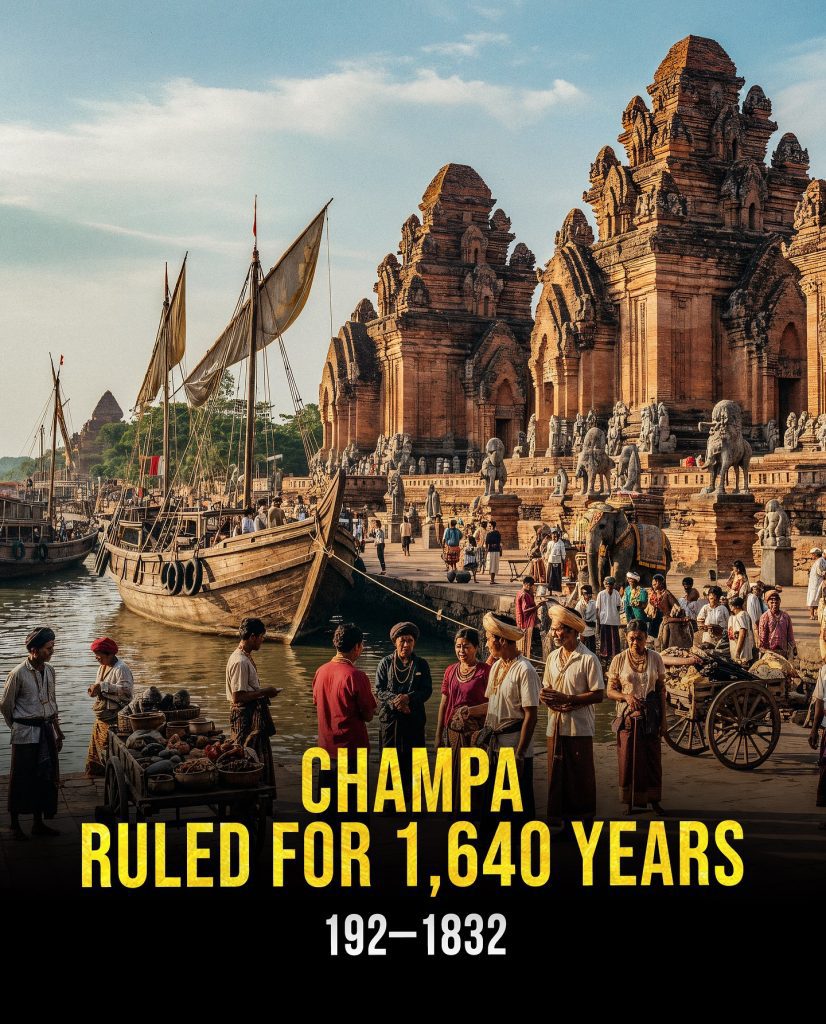
In the coastal lands of today’s Vietnam, the kingdom of Champa thrived between sea and mountain for sixteen centuries. It was a maritime power that traded silk, spices, and ideas with India, Arabia, and China. Champa’s temples, like Mỹ Sơn, stand hidden beneath the forest canopy — sacred testaments to devotion and architecture. They worshipped Shiva, celebrated the sea, and built a civilization that pulsed with creativity. While empires of land conquered with armies, Champa ruled with ships and trade winds, proving that an empire can be built on connection, not conquest.
ROMAN EMPIRE RULED FOR 1,480 YEARS (27 BCE – 1453 CE)

Rome began with a myth — a she-wolf and two brothers — and became an empire that defined civilization itself. Its legions marched across continents, building roads that became the veins of the world. Its laws shaped modern justice, and its architecture inspired centuries of design. Even when Western Rome fell, the Eastern Byzantine Empire carried the torch for another thousand years, turning the memory of Rome into a living idea. In truth, Rome never truly died. Its spirit flows through languages, cities, and governments — an invisible empire still standing in the heart of every modern nation.
KINGDOM OF KUSH RULED FOR 1,420 YEARS (1070 BCE – 350 CE)
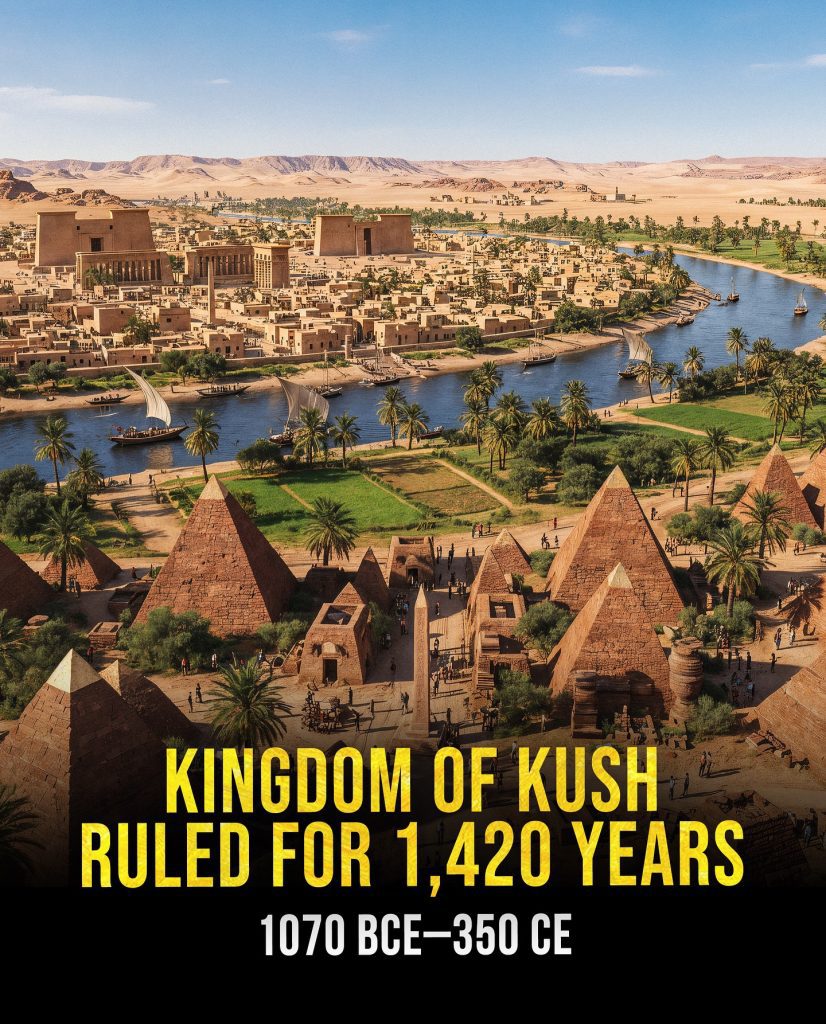
South of Egypt, across the golden sands of Nubia, the Kingdom of Kush thrived for over a millennium. Its rulers once conquered Egypt itself, wearing the crowns of pharaohs and bringing African might to the Nile. Their capital at Meroë glimmered with ironworks and pyramid tombs, each smaller than Giza’s but filled with unique purpose. Kush was more than a neighbor to Egypt — it was its equal, its rival, and often its rescuer. When its empire ended, its influence lived on in the languages, symbols, and spirit of African kingdoms that followed.
ANURADHAPURA KINGDOM RULED FOR 1,394 YEARS (377 BCE – 1017 CE)

In the heart of Sri Lanka, a city of faith rose that would endure for fourteen centuries. Anuradhapura was a kingdom of enlightenment, built around Buddhism and community rather than conquest. Its rulers created vast irrigation networks, reservoirs, and temples that still stand today. The great stupas shimmered under the sun, guiding monks and pilgrims for generations. Anuradhapura’s strength came not from walls, but from wisdom — the understanding that harmony could build what war could never sustain.
KANEM–BORNU EMPIRE RULED FOR 1,193 YEARS (700 – 1893 CE)

Across the sands of Central Africa, where few civilizations could survive, Kanem-Bornu thrived for more than a thousand years. Centered around Lake Chad, it became a crossroads of trade, scholarship, and faith. Caravans carried salt, ivory, and manuscripts across the Sahara, linking Africa’s heart to the Mediterranean world. The Sayfawa dynasty ruled for generations, blending Islamic learning with African tradition. In its endurance, Kanem-Bornu proved that greatness isn’t measured by monuments — but by how long a people can hold on to their identity.
NRI KINGDOM RULED FOR 868 YEARS (1043 – 1911 CE)

In what is now Nigeria, a spiritual empire rose that conquered no one — yet influenced everyone. The Kingdom of Nri ruled through moral authority, not armies. Its priests acted as peacemakers, mediators, and guardians of culture. They governed through rituals, fairness, and faith, binding villages under shared customs rather than coercion. In a world of endless war, Nri was a quiet revolution — proof that power doesn’t always roar; sometimes it whispers, and still lasts centuries.
HOLY ROMAN EMPIRE RULED FOR 844 YEARS (962 – 1806 CE)

When the old Roman Empire fell, Europe tried to rebuild it in spirit. The Holy Roman Empire united kings and clergy under the cross and crown. It was an empire of faith, ambition, and contradiction — never fully united, yet never broken. For eight centuries, it influenced art, law, and politics across Europe, laying the groundwork for the modern states that would replace it. It was proof that even imperfect unity can shape the destiny of a continent.
AKSUMITE EMPIRE RULED FOR 840 YEARS (100 – 940 CE)

High in the Ethiopian highlands, the Aksumite Empire ruled one of Africa’s greatest ancient realms. Its obelisks rose to the sky, its traders reached Rome and India, and its kings embraced Christianity long before Europe’s monarchs did. Aksum was a bridge — between Africa and Asia, faith and power. Even when its cities faded, its legacy endured in Ethiopia’s proud independence and unbroken Christian tradition. Aksum was more than a kingdom — it was the soul of a continent’s history.
KINGDOM OF MAKURIA RULED FOR 732 YEARS (580 – 1312 CE)

In the heart of Nubia, Makuria stood as a Christian stronghold long after the rest of North Africa had changed. Its people resisted invasions through diplomacy and faith, protecting their land for centuries. The kingdom’s churches, painted with saints and crosses, were symbols of defiance and devotion. Though time eventually took its walls, Makuria’s endurance told the world that belief can be mightier than armies.
SRIVIJAYA RULED FOR 727 YEARS (650 – 1377 CE)

Where the seas meet in modern Indonesia, Srivijaya ruled the waves for over seven centuries. Its empire was built on trade, religion, and the mastery of the ocean. From its ports flowed gold, spices, and Buddhist wisdom to every corner of Asia. Srivijaya’s rulers understood that water connected more than it divided. Long before modern globalization, they created a maritime network that turned islands into an empire of prosperity and peace.
ETHIOPIAN EMPIRE RULED FOR 704 YEARS (1270 – 1974 CE)
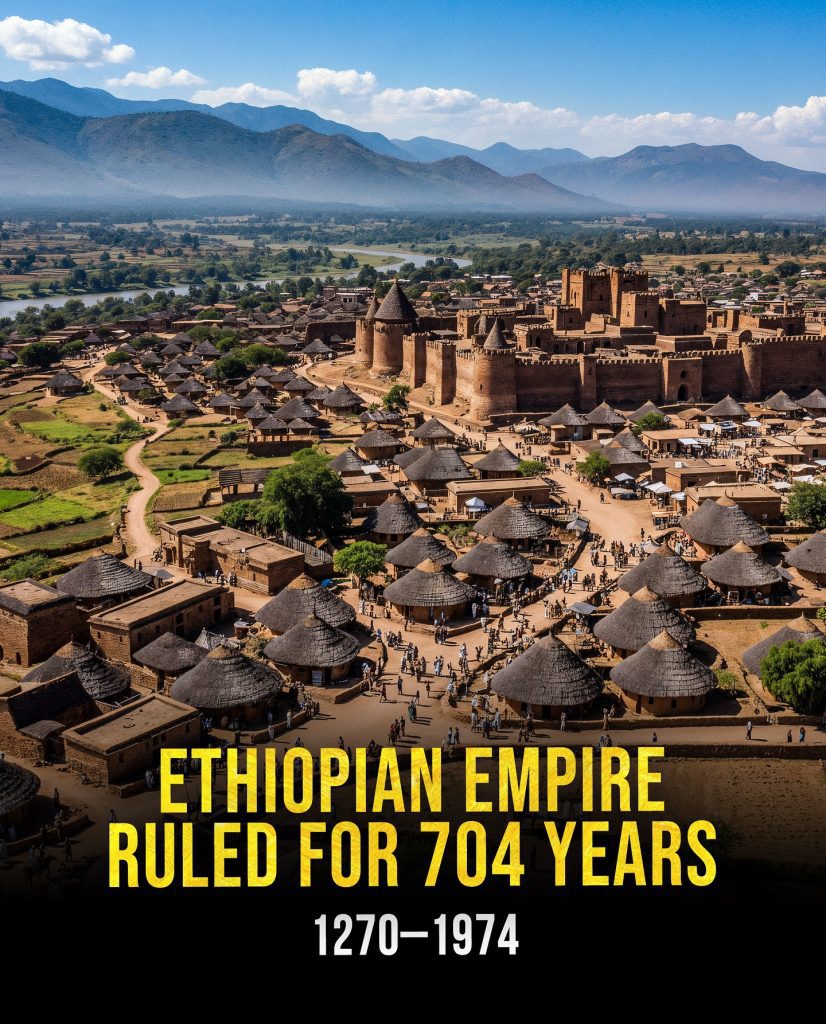
The Solomonic dynasty of Ethiopia was one of history’s last living links between the ancient and modern world. Claiming descent from Solomon and Sheba, its emperors ruled with divine legitimacy. Through invasions, revolutions, and modern upheaval, Ethiopia remained uncolonized — a symbol of African strength and pride. Even in its final years under Haile Selassie, the Ethiopian Empire carried a light that inspired generations across continents.
KHMER EMPIRE RULED FOR 629 YEARS (802 – 1431 CE)
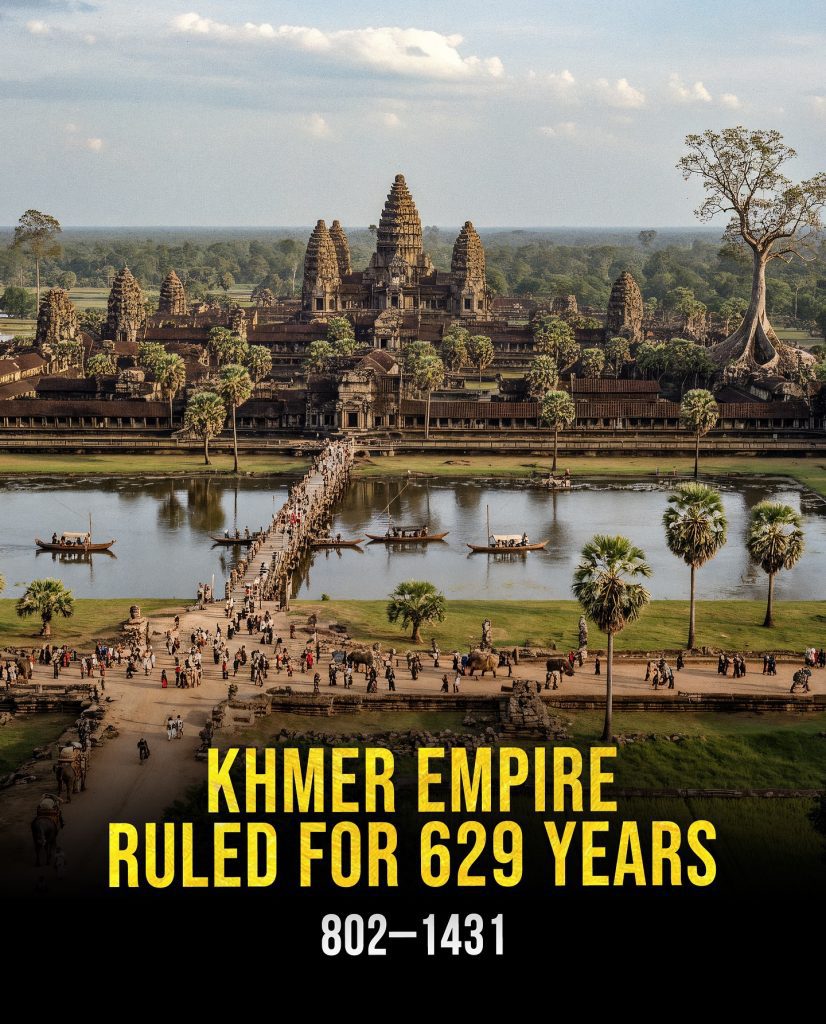
Deep in the jungles of Cambodia, the Khmer Empire built wonders that defied imagination. Angkor Wat, its crown jewel, wasn’t just a temple — it was a universe carved in stone. The empire mastered irrigation, architecture, and philosophy, blending Hindu and Buddhist beliefs into art that still mesmerizes the world. Though nature reclaimed its cities, its spirit never faded. The Khmer Empire remains one of humanity’s most poetic reminders that beauty can be eternal, even when power passes.
History shows that empires rise not only through might, but through adaptation. Those that listened to their people, embraced change, and respected balance endured the longest. Their ruins remind us that no power lasts forever — but the ideas, art, and wisdom they leave behind can outlive even time itself.

